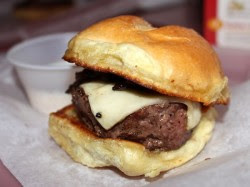Truth and dare is an interesting game.
The idea is to uncover the truth or face the consequences.
Food labeling just may be the same game.
Watchdog group Center for Science in the Public Interest (CSPI) recently sent a scathing report to the U.S. Food and Drug Administration itemizing what it said were false food-label claims and demanding action.
DNA studies done late last year by two New York City high school students found that one out of six products in their own kitchens had labeling that was flat-out wrong. This included cheese claiming to be made from sheep's milk that was actually plain old cow's milk and caviar that was Mississippi paddlefish instead of sturgeon, as advertised.
According to a study released in 2009, about 2 percent of food products without a "may contain" warning actually do contain allergens. Even a trace of some allergens -- peanuts, for example -- could be lethal to some people.
So, is the FDA doing its job?
While there are many who think not, others believe the fault does not lie entirely with the agency.
Regardless, consumers should not believe these labels just because it's printed on the package.
"The FDA is supposed to keep assuring accurate nutritional labeling .. but that takes a lot of time and a lot of staffing," noted Susan Kraus, a registered dietitian with Hackensack University Medical Center in New Jersey. "I don't think it's that they're blatantly not doing their job."
"It's not just the FDA," added Dr. Robert H. Sprinkle, associate professor in the School of Public Policy at the University of Maryland, College Park. "There are a lot of people involved here, a lot of parts of government and a lot of activities that aren't really under government purview, although people might assume they are, such as supplements."
"How many hundreds of thousands of food products are sold every day?" added Sprinkle. "They're sold many times to hundreds of millions of people. They're processed in different plants. They might have origins in different countries. Differences in composition may actually displace some components or affect what happens in cooking. The idea that you could continually keep up with that and continually revise the labels so you hit it on the nose, it's not going to happen."
"The FDA label tells you what went in the product but when you bite into it, in some cases the food ingredients may have changed -- as a result of temperatures during the storage period or conditions during distribution of the product -- and are therefore no longer true to the label," explained Kantha Shelke, a spokeswoman for the Institute of Food Technologists
"Processes are changing and labeling technology hasn't kept up, and it's in the interest of some that it stay that way," Shelke said. "It's sort of like the police department. Do you take care of the big murderers or all the petty thieves? The FDA is in a similar position with a whole bunch of things in front of them.
Then there's the convenience factor. Americans want something that can stay on the shelf for six months, if need be, Shelke said, and adding more preservatives often means upping the calorie count. Salt is a big preservative, but too much doesn't taste that good, so manufacturers may add sugar or fat to compensate, he said.
Add to that the FDA's own built-in "fudge factor."
"The FDA allows up to 20 percent variance [on nutritive counts]," said medical director Marina Kurian.
But even though labels may be confusing, some of the responsibility rests with consumers, she said.
"I think it's important for people to realize that they're not necessarily always getting what they think they're getting," Kurian said. "You can't just glance at the label. You have to really read it."















































